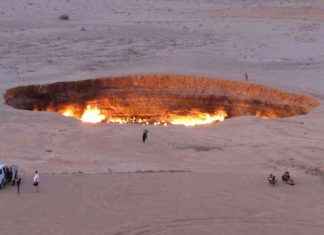WHAT IS A FACE SHIELD?
The face shield is a device positioned in front of the face to protect the user from a variety of potentially harmful materials including solid particles, gasses, and liquids encountered in the workplace. Made of hard plastic the shield is held in place by straps, elastic bands, or rigid structures and worn like a helmet.
Face shields have been an OSHA requirement since 1971. OSHA, the Occupational Safety and Health Administration has established guidelines for the safety of the workplace. The industries and activities where face shields are required are regulated by OSHA. There are also standards for the masks themselves.
Since the Covid Pandemic, civilian use of Face Shields is becoming more common.
The variety of materials used to make the shields ranges from various types of plastics, to mesh and guard type masks used by sports players.
Most activities, whether sporting, or workplace related may expose the users’ face to injurious substances or objects.
Cutting tree limbs exposes the user to wood particles, and workers in a chemical plant face the risk of caustic or hot fluids striking your face. The loss of any of these senses and functions would be disabling.
FACE SHIELDS IN A WORKPLACE.
Most workplaces must comply with OSHA regulations. Glass partitions, vent hoods and guards on machines all make the workplace safer, but there is still a risk of exposure to dangerous substances that only a face shield can provide.
Face Shields are lightweight, easy to wear and do not restrict the worker from performing his or her tasks. Many of them also undergo safety and abrasive blasting to make them more effective.
A full shield is a better solution for eye protection than goggles because the worker does not need to worry about them falling off and Goggles protect the eyes only. A face shield protects the entire face from injury and from ingestion or breathing of harmful gases or fluids.
SOME EXAMPLES OF DANGERS IN THE WORKPLACE WHERE FACE SHIELDS SHOULD BE WORN
Any use of machinery poses the risk of solid particles being thrown into the face of the operator. This includes operating wood and metal milling machines, power saws, CNC manufacturing machines, grinding, polishing and any operation where material is being removed to create a part or product.
Many professions, including landscaping, lumber, using power cleaning equipment and many others pose a risk to the worker.
Chemical risks range from acids, alcohols, petroleum, and paint. Even some of the products that are consumable contain harmful substances. Although these substances may be safe in the final diluted form of a beverage, in the base form they are dangerous. The phosphoric acid that gives some carbonated beverages their tangy flavor is dangerous in its undiluted form.
Paints contain solvents, and some lubricants contain acids. Whether during the manufacturing process or the application of the substance, a shield is recommended.
MATERIALS USED TO MAKE FACE SHIELDS AND THEIR DIFFERENCES.
There are many materials used and all have specific qualities. While it is true that any face shield is better than no shield at all, some materials are better suited to particular applications.
POLYETHELYNE
This material is a transparent plastic and provides protection from chemical and impact dangers. Sawing, milling, sanding, and abrasive cleaning are examples of potential impact dangers.
Polyethylene is also one of the lower cost materials.
POLYCARBONATE
This is also a clear plastic substance. Polycarbonate has excellent impact resistance, is chemical resistant, and will withstand cold. This means it will resist cracking in cold temperatures.
PROPIONATE
This is another transparent plastic material and has adequate impact and chemical resistance.
The cost is lower than acetate and polycarbonate.
ACETATE
Acetate is an excellent choice because Acetate is superior to all others in clarity. It is chemical and scratch resistant. It is also impact resistant.
SPECIALTY FACE SHIELDS
There is a category of specialty materials offering protection from ultraviolet radiation and arc glare. Some of these shields have a GOLD coating a few molecules in thickness. The metallic properties of gold block harmful wavelengths of light.
STEEL AND NYLON MESH
These materials are designed to guard against particles like sawdust and sand. They offer superior impact resistance. and breathability. They will not provide any protection from chemical or gas substances.
ARC AND WELDING SHIELDS
These shields are specific for professions such as electrical work where the intense glare of an electrical arc can cause permanent eye damage.
Although they may offer some chemical and impact resistance, this is not their primary purpose. The anti-glare properties may also limit vision when performing tasks that require close-up work.
Welders’ face shields must protect against arc glare and sparks from the welding rod. Another specialty type is molded plastic shields used in sports.
FACE SHIELDS FOR PERSONAL PROTECTION
Increasingly, shields are used as protection from airborne diseases. Although they provide protection to the user, they also prevent the spread of particles when the user coughs or sneezes. Protection from airborne particles from others is acceptable, but the highest level of protection is when used in conjunction with a cloth or other woven material type mask. The major advantage of these shields is their light weight and relatively low cost.
They also make breathing easier for individuals with preexisting pulmonary difficulties.
HOW TO SELECT THE BEST FACE SHIELD FOR YOUR NEEDS.
Choose the shield that offers the best protection and make cost a secondary consideration.
When considering suppliers be sure to state the specific purpose of the shield. OSHA and other organizations publish standards for different workplace protection measures.
The basic fact is that any protection is better than none. Face shields are generally comfortable and allow the user to breathe and speak normally. Most shields are held in place with elastic, but some specialty shields use straps. Some are worn like a helmet and have a flip up feature enabling the user to inspect the work without completely removing the shield.
This article is intended as an overview only and with the infinite variety of work and health considerations, it is not possible to cover them all.
The costs may vary from ten dollars to over two hundred for a specialty item like a welder’s shield.
Be sure to get the best protection necessary for your purpose and stay safe!








